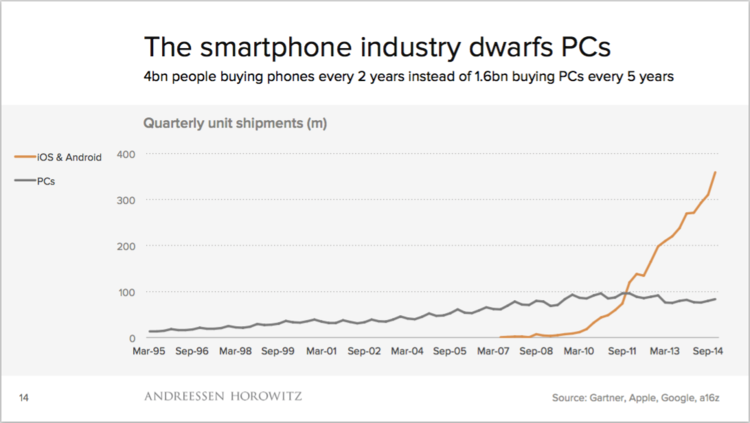At 83% Kenya is officially the leading consumer of internet in the world. According to Jumia’s Kenya Mobile White Paper 2018, this high internet penetration can be attributed to the fact that over 4.3 million Kenyans own a smartphone and the number is growing by 200,000 smartphones monthly.
So how do you as a marketer, use this data to better understand and engage with your target audience?
Mobile Marketing in Kenya; From Ads to Apps
Previously, Kenyan marketers have capitalized on mobile display ads, push notifications and Bulk SMSs to push their message to the target audience. While such strategies might have yielded results, the mobile landscape has changed. For example, here are a few downsides of mobile ads;
- People don’t like Ads
Since you perceive your phone as more personal compared to your laptops, receiving a display ad or an unsolicited SMS on your smartphone can feel intrusive and even disrespectful. In fact, research conducted by digital analytics firm shows that 52 per cent of app users find push notifications as an annoying.
- Ads are not optimized for Smartphones
While you are conditioned to expect ads on the right margin of your laptop like on Facebook and Google, smartphone screens are too small to feature ads on the margin meaning you have to deal with ads popping up in unexpected places
- The Fat Finger Problem
I’m sure you have experienced this at least once. You want to click on something close to the ad but you end up clicking on the ad because the screen is too small for display ads in the first place. Keeping in mind that such ads work on a pay-per-click model, every time you click the ad by mistake a cost is incurred by the marketer.
A Simple Guide to Mobile Application Marketing
As a marketer, you are always looking for ways to get closer to your target audience, to understand their challenges, goals and situations. Consequently, mobile applications provide a direct channel to your clients.
Benefits of a Mobile Application to Your Brand
- You are always visible on your clients’ screens every time they use their phones.
- Your audience can interact with your content even when offline
- Applications enable marketers to track and leverage customer data in real time
- An app presents additional revenue generation opportunities due the increased service delivery episodes
However, despite the high uptake of mobile applications among Kenyans, research shows that 23% of users abandon an app after using it once. So the question remains, how do you as a marketer develop a mobile application that your target audience will find useful enough to engage with your brand in the long-term?
The Different Types of Mobile Applications
Whatever your marketing goals are, first you need to understand the different types of mobile applications and the potential value they can offer your clients.
- There are games and entertainment mobile applications which make up 42% o mobile applications. Example; Candy Crush, Assassin’s Creed and Temple Run
- Social network applications like Facebook, Twitter and Instagram make up 31% of mobile applications.
- Utility application are simply add-on functions that help the main system perform better. For example, email, clocks, alarm clocks, weather apps etc.
- Discovery apps help the users to find patterns and trends within a given set of data. For example, apps like fundiapp help you locate fundis in your area while JumiaEats helps you find restaurants in your area and order for meals.
- Branded applications like the Nation media app or the Tala app typically reflect the brand’s identity and feature its values, colours, logo, visual identity and style, slogan, and more.
Top 4 Marketing Strategies for Mobile Apps
- Solve a problem for your target audience
The only reason why your clients or prospects will go through the trouble of installing your app is if it solves an existing problem. Mobile applications like Equitel’s Eazzy Pay make it easier for clients to manage their money without the hassle of going to a physical bank or the constraints of opening and closing hours. Therefore, the app solves the problem of closing bank hours as well standing in long queues.
- Give Your Clients Unique Value
Your clients have a lot of apps on their phones but not enough time. According to a report by App Annie, the average smartphone owner uses over 30 apps in a month. To ensure your app doesn’t get un-installed, your sales and marketing team should research to identify gaps and areas where you can add value. For example, ColorSmart by BEHR® Mobile an app by a paint manufacturer, is a good example of a branded app which provides unique value by enabling users to use their phones’ cameras to check whether a paint color matches the pictures taken, shows related colors and color spectrums, and also provides room mock ups showing how the paint looks in real world situations to aid customers in selection. Such features are actually very useful for people who are in the process of renovating their homes or interior designers.
- Provide Social Value
Have you ever wondered why Whatsapp is one of the most popular apps in Kenya? Other than it being easy to use and free, Whatsapp generates social value by facilitating activities which enhance connections among friends and family. Similarly, your mobile application should encompass features which promote interactivity with friends instead of disrupting their relationship. A good example of this is the Major League Baseball’s MLB@Bat app which allows fans to follow live action of their favorite teams anywhere in the world. This, in turn, allows fans to stay engaged with the team and their fellow fans regardless of geography.
- Give Creative Incentives
Whether this takes the form of a one-off promotion or a customer loyalty program, you will need to come up with creative incentives which encourage your clients and target audience to use your app. For example, the Safaricom Blaze Anniversary Offer Promotion required subscribers prepay customers to download and open the Blaze App, shake their phone for the offer to pop up then claim their reward.
Instead of spending your marketing budget on tiny banner advertisements which often interrupt the user experience and are ineffective, consider leveraging the 83% mobile penetration rate in Kenya by focusing on mobile applications which add value to the consumers’ lives while enhancing the long-term engagement.
End
++++++++
This article was written by Mercy Rop.
Mercy is a digital marketer at Legibra Solutions, a creative studio dedicated to design, development, branding, printing and outsourcing of infrastructure. She is passionate about learning, Data-sharing, and marketing analytics.
TLDR; Instead of spending your marketing budget on tiny banner advertisements which often interrupt the user experience and are ineffective, smart Kenyan brands should leverage the ubiquity of mobile phones in Kenya by focusing on mobile applications which add value to the consumers’ lives while enhancing the long-term engagement.


